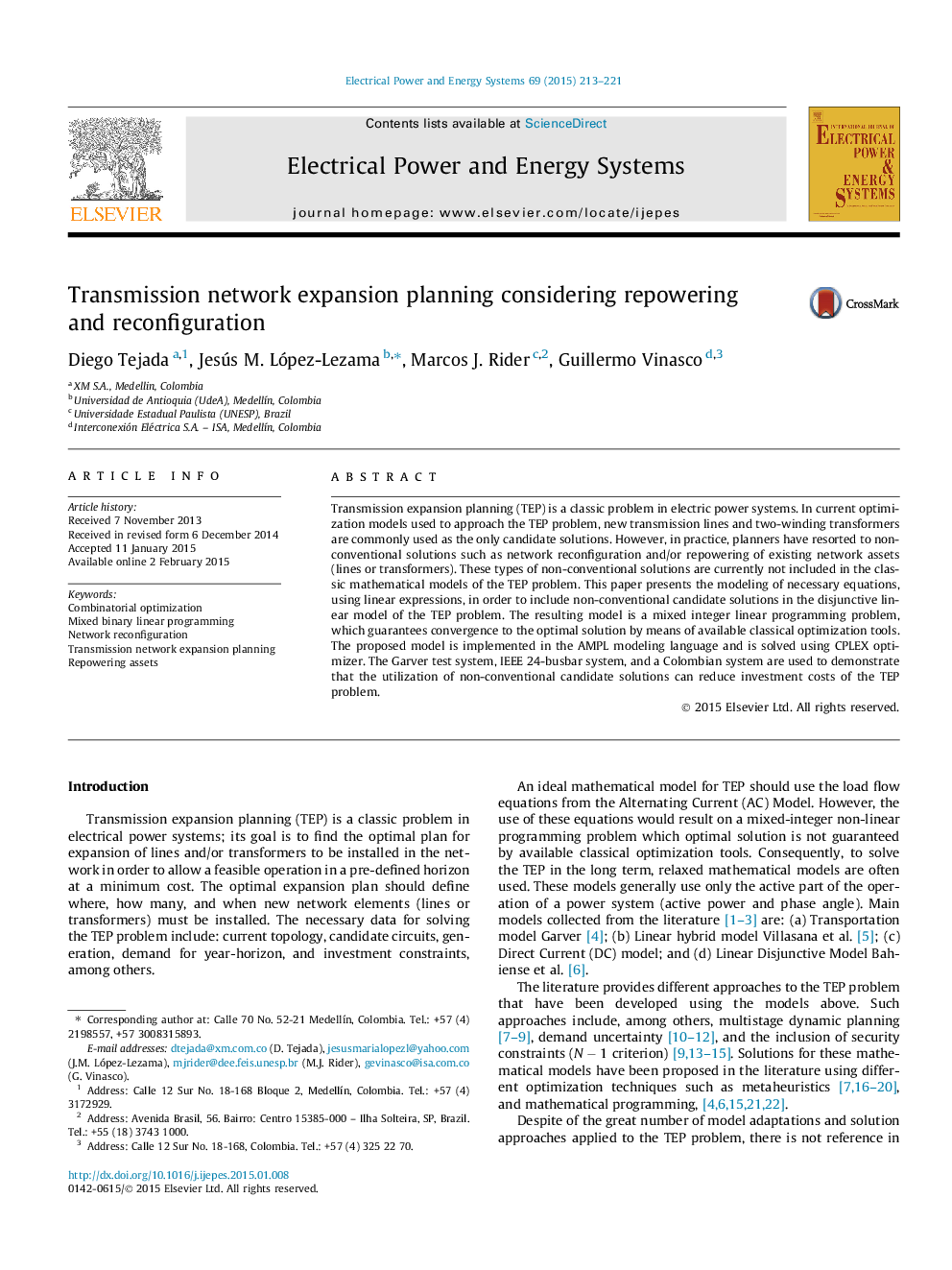| Article ID | Journal | Published Year | Pages | File Type |
|---|---|---|---|---|
| 399527 | International Journal of Electrical Power & Energy Systems | 2015 | 9 Pages |
•A novel transmission network expansion planning model is presented.•The proposed model includes nonconventional candidate solutions.•Linear modeling to include such nonconventional solutions is developed.
Transmission expansion planning (TEP) is a classic problem in electric power systems. In current optimization models used to approach the TEP problem, new transmission lines and two-winding transformers are commonly used as the only candidate solutions. However, in practice, planners have resorted to non-conventional solutions such as network reconfiguration and/or repowering of existing network assets (lines or transformers). These types of non-conventional solutions are currently not included in the classic mathematical models of the TEP problem. This paper presents the modeling of necessary equations, using linear expressions, in order to include non-conventional candidate solutions in the disjunctive linear model of the TEP problem. The resulting model is a mixed integer linear programming problem, which guarantees convergence to the optimal solution by means of available classical optimization tools. The proposed model is implemented in the AMPL modeling language and is solved using CPLEX optimizer. The Garver test system, IEEE 24-busbar system, and a Colombian system are used to demonstrate that the utilization of non-conventional candidate solutions can reduce investment costs of the TEP problem.
